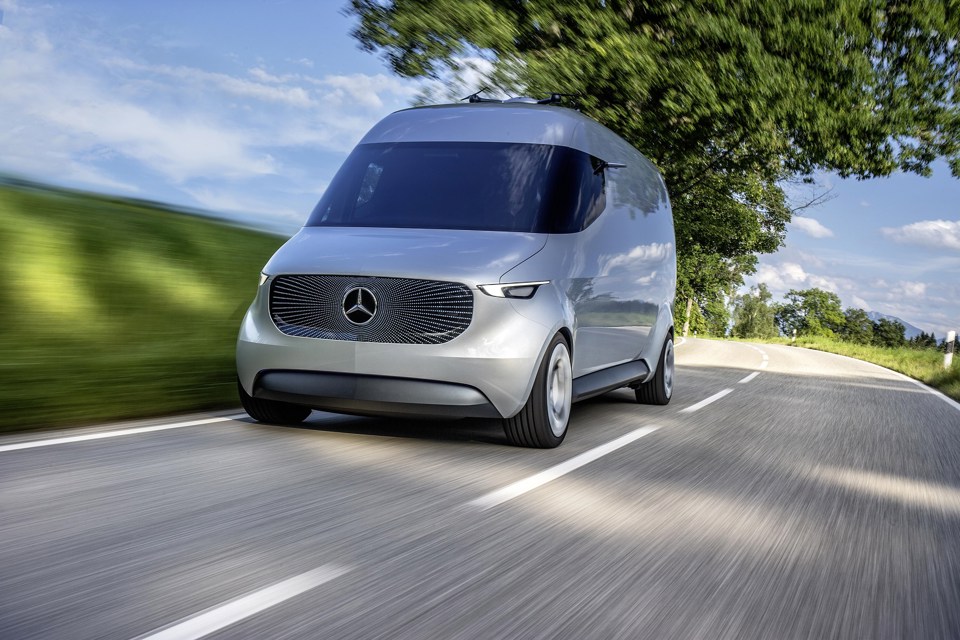Half of the respondents to a Commercial Fleet poll said they expect the first self-driving vans to feature on UK roads by 2030. One in four (26%) believes they will start being operated earlier by commercial fleets –in 2025.
But almost one-third (31%) of respondents said that autonomous vans will never be adopted by commercial fleets, suggesting that there remains a significant degree of scepticism within the industry.
There are five accepted technology levels which distinguish between differing levels of capability for autonomous vehicles. A level 4 vehicle can do the complete driving task but only under certain boundary conditions. A level 5 vehicle is a one that will do all the driving all the time, and will be able to do any driving that a human is capable of.
Today’s vans are already advanced, with cameras and radars fitted to monitor hazards ahead.
Autonomous Emergency Braking (AEB) and lane departure systems are becoming standard, and level 2 autonomy, with automated braking, acceleration and steering, is starting to appear.
Experts predict by the start of the next decade, there will be an increased degree of autonomy, with the van able to take complete control and allow drivers to carry out other tasks.
By 2025, they say, vehicles will be able to drive from door to door without a driver needing to touch the wheel.
Ford intends to have a fully autonomous, SAE level 4-capable vehicle for commercial application in mobility services, such as ride sharing, ride hailing or package delivery fleets, in 2021. It also expects continued growth in electrified vehicle offerings, to the point where they outnumber their petrol-powered counterparts, in the next 15 years.
Shared modes of transportation will continue to gain popularity, it says, and connected communications between vehicles and infrastructure will grow.
Speaking at SMMT Connected, a conference on connected and autonomous vehicles (CAVs), Graham Hoare, director of Global Vehicle Evaluation and Verification at Ford, told delegates: “Autonomy for us is productivity squared. If we’ve got a commercial vehicle which is optimised in its connectivity then automating it enables that final degree of productivity.”
It will, he said, make fleet operators “more efficient, more effective and more profitable”, and will “open new markets and new opportunities” for the auto industry.
Meanwhile, Mercedes-Benz last year revealed that it is investing approximately €500 million (£420m) over the next five years to help drive increased automation in its vans.
With its ‘Advance’ initiative, the manufacturer says it is systematically adapting to new, rapidly changing customer requirements.
Its all-electric ‘Vision Van’ concept (pictured) combines various solutions for last-mile delivery in urban and suburban environments. It will digitally connect all people and processes involved, from the distribution centre to the consignee.
Furthermore, it features a fully automated cargo space and integrated delivery drones. For example, if a parcel service provider stops his vehicle in a residential area, it will be possible to deliver multiple packages autonomously by air – even if the recipients are not at home – in addition to manual delivery.
Volker Mornhinweg, head of Mercedes-Benz Vans, said: “The intelligent automation technology connects the entire process, from loading and transportation by road through to delivery to the consignee. This makes it easier for the deliverer to do business and rapidly reduces the delivery time for end customers.”
In addition to increased productivity, commercial fleet operators will also benefit from fewer collisions involving their vehicles.
An autonomous vehicle study, from the Ptolemus Consulting Group, claims automation at level 4 will reduce losses from crashes by up to 88%.
In the case of a frontal collision, advanced driver assistance systems (ADAS) alone will have the biggest impact on claims cost, it says, with a 30% reduction overall.
“Automation will save millions of lives,” said Frederic Bruneteau, managing director of Ptolemus. “The fact that Intel valued Mobileye at five times what Audi, BMW and Daimler paid for HERE demonstrates both the panic and the momentum behind AVs.”



















Login to comment
Comments
No comments have been made yet.